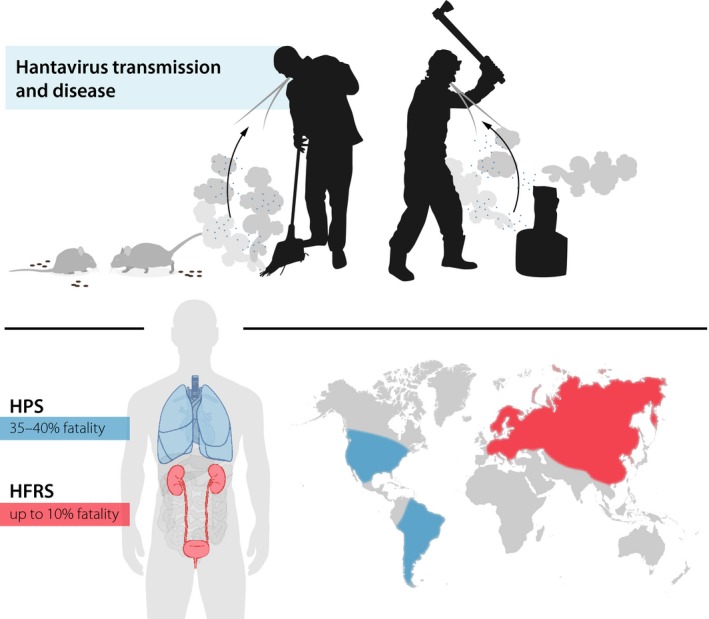Figure 1.

Transmission of pathogenic hantaviruses including Puumala virus (PUUV) to humans occurs predominantly through the inhalation of dust containing virus‐contaminated rodent excreta (illustrated in the upper part of the Figure). In a global perspective, two main hyperinflammatory clinical syndromes can be distinguished following infection with different species of hantaviruses: haemorrhagic fever with renal syndrome (HFRS) and hantavirus pulmonary syndrome (HPS). HFRS is the predominant hantavirus‐induced disease syndrome in Eurasia whilst HPS dominates in the Americas. Many aspects of HFRS and HPS are shared between the two diseases, and the pathogenesis is likely similar even if there are some differences in organ manifestations and, importantly, in severity (illustrated in the lower part of the Figure). In the present review, we discuss recent insights into the innate and adaptive cell‐mediated immune responses to human PUUV infection.
